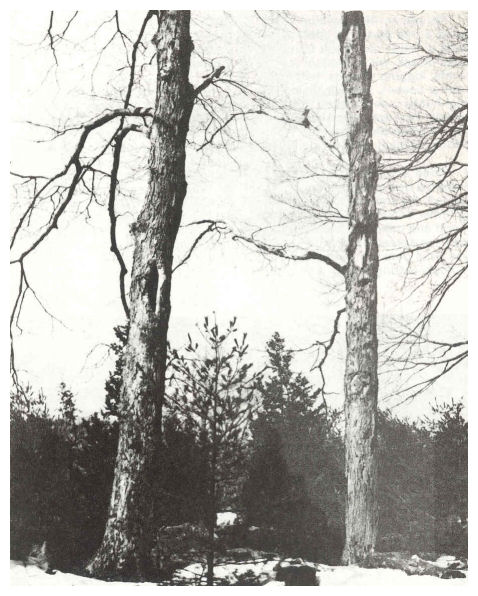

Figure 1.-Cavities in living, dead, and dying trees are used by many species of wildlife. These sugar maple trees have provided dens for many mammals.
Introduction
Dead trees and trees that contain decayed wood provide shelter for approximately a fourth of the forest wildlife species of the Northeast (Fig. 1). Both birds and mammals use cavities in such trees for shelter from the weather, to escape from predators, for foraging and caching food, and most importantly for producing and rearing young.
For years, cavity and den trees have been removed routinely both during timber management operations because they were thought to harbor diseases and insect pests, and in cities and towns because they were thought to be unsightly or hazardous. Wolf trees, likewise, have been removed routinely during timber management because their wide-spreading crowns suppressed other trees. These practices are starting to change because land managers and arborists now realize that most species of birds that use cavity trees feed primarily on insects, and thereby help prevent insect outbreaks. Also, public concern for the welfare of cavity - nesting wildlife has increased in recent years.
Page 1
How Cavities Form in Trees
Natural cavities develop when part of a tree dies or is injured. Death or injury can result from fire, insect attack, wind, snow or ice storms, logging wounds, herbicides, or other causes. Decay-causing fungi become established in tree wounds. Woodpeckers also create cavities when they excavate nesting, feeding, or roosting holes.
When a branch or a root dies, or when a tree is injured and infected, the tree responds by forming firmer boundaries to contain the injured and infected tissues or to resist the spread of infecting organisms. This defense process of boundary-setting is called compartmentalization. Boundaries and boundary-setting are the keys to understanding the development of cavities in trees.
The barrier zone is the tree's major defense boundary because it separates the older infected wood from the recently formed healthy wood. For example, if a tree is injured and infected when it is 4 inches in diameter, the greatest diameter of decayed wood will be 4 inches-about the right size for nest excavation by a downy woodpecker (Picoides pubescens). Organisms seldom spread beyond the barrier zone.
After branches and roots die, and after wood is injured by mechanical wounds, many organisms infect the dying and exposed tissues. Bacteria, nondecay-causing fungi, and decay-causing fungi are the major microorganisms that first interact with the tree. Discoloration and decay form as wood cell walls are broken down by microorganisms. As the decay process proceeds, many other organisms enter, such as insects and nematodes. The wood within the boundary set by the tree is slowly digested until a hollow results (Figs. 2, 3, 4).
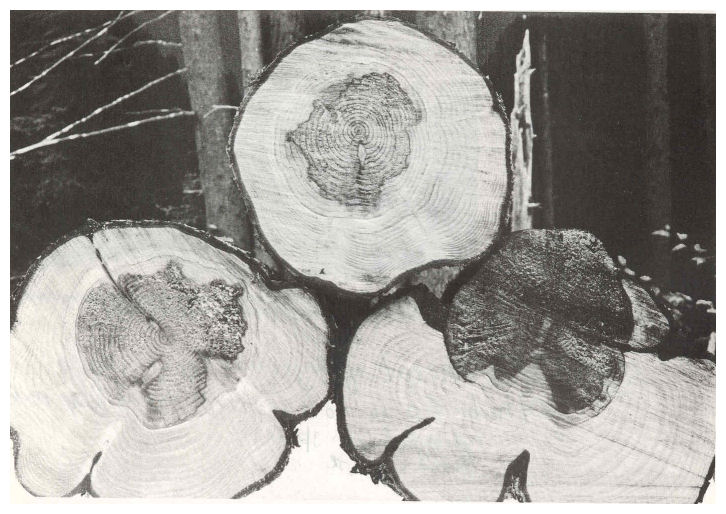
Figure 2.-Dissection of a hemlock that was wounded by a black bear (see Figure 7). The wood sections show that the diameter of the tree at the time of wounding was the greatest diameter of decayed wood. As the wood breaks down, a cavity approximately 10 inches in diameter will develop in the tree.
Page 2
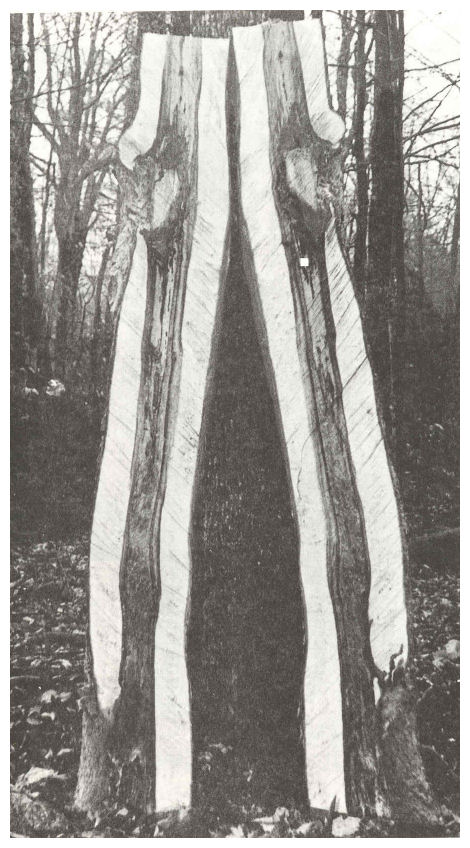
Figure 3.-Dissection of a sugar maple shows the internal column of decayed wood. The diameter of the internal column was the diameter of the tree at the time of wounding at the base and above at 8 feet.
Page 3
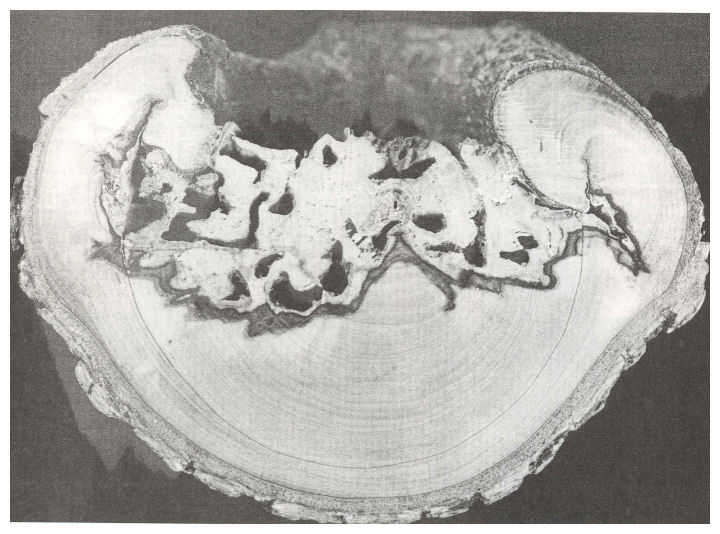
Figure 4.- The wound in this sweetgum was caused by a beaver. The decayed wood was within the diameter of the tree at the time of wounding. Note the barrier zone that formed completely around the trunk. The decay in time would have developed within the limits of the barrier zone. The barrier zones make cavities possible in trees.
Page 4
But long before hollows form, in many trees woodpeckers may begin to either excavate the infected wood to form a cavity, or to drill into sound wood that surrounds the column of infected wood, and then into the infected wood (Fig. 5).
When leaders or main stems break or die on trees, a new leader may develop from a lower branch that is still alive. The stub of the old leader is called a stem stub. The column of decayed wood associated with stem stubs will be the diameter of the leader at the time of death, and the column will develop downward. As columns of decayed wood progress to hollows, they become ideal dens for many mammals. The cavities are most suitable when the leader was bent before it died-water does not flow into such cavities (Fig 6).
Often wounds occur at the base of large trees (Figs. 7 and 8). When the tree has the capacity to continue to grow, the diameter of the tree at the time of wounding will be the diameter of the defect. Such a situation can lead to the development of a cavity tree.
Trees survive after injury and infection because they wall off the infected wood. The boundary-setting process makes cavities possible in living trees. Knowing this, it is possible to regulate number and size of desired cavities for wildlife. For example, if an animal must have a cavity 4 inches in diameter, then some wounding must occur when the tree is 4 inches in diameter. Compartmentalization does give us new opportunities for wildlife management.
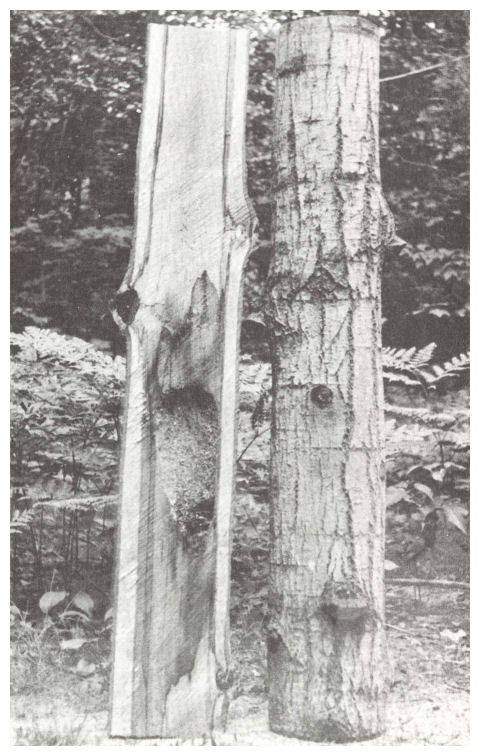
Figure 5.-Dissection of an aspen that was abandoned as a nesting tree by a yellow- bellied sapsucker. The sapsucker often selects aspen for nesting trees, especially trees that are greater than 10 inches d.b.h. Such trees often have large columns of firm decayed wood associated with canker rot fungi as shown here.
Page 5
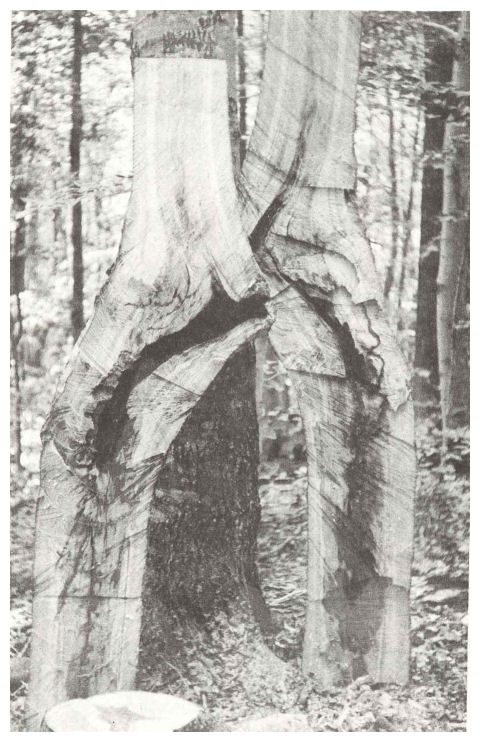
Figure 5.-Large cavity in a beech associated with a decayed stem stub that followed the decay of the leader when it was approximately 5 inches in diameter. The curved hollow is fine for cavity dwelling wildlife. Note also the sound roof to the cavity.
Page 6
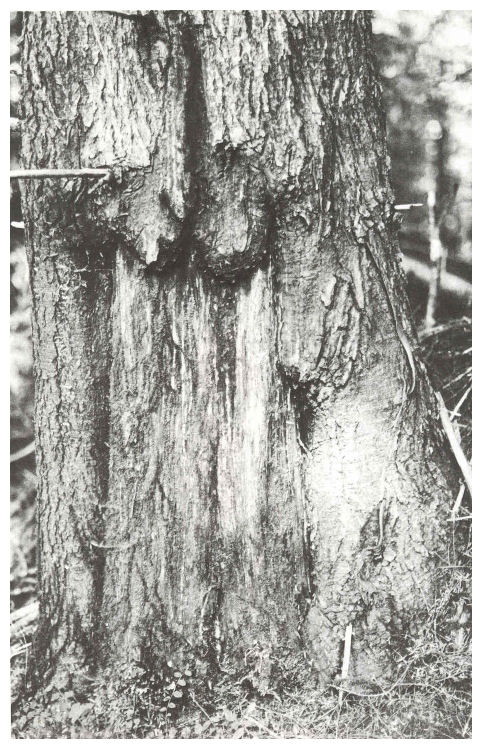
Figure 7.-Basal wound on western hemlock made by a black bear. Such wounds often start the processes that can lead to basal cavities.
Page 7
Pages 1 - 7 (You are here)